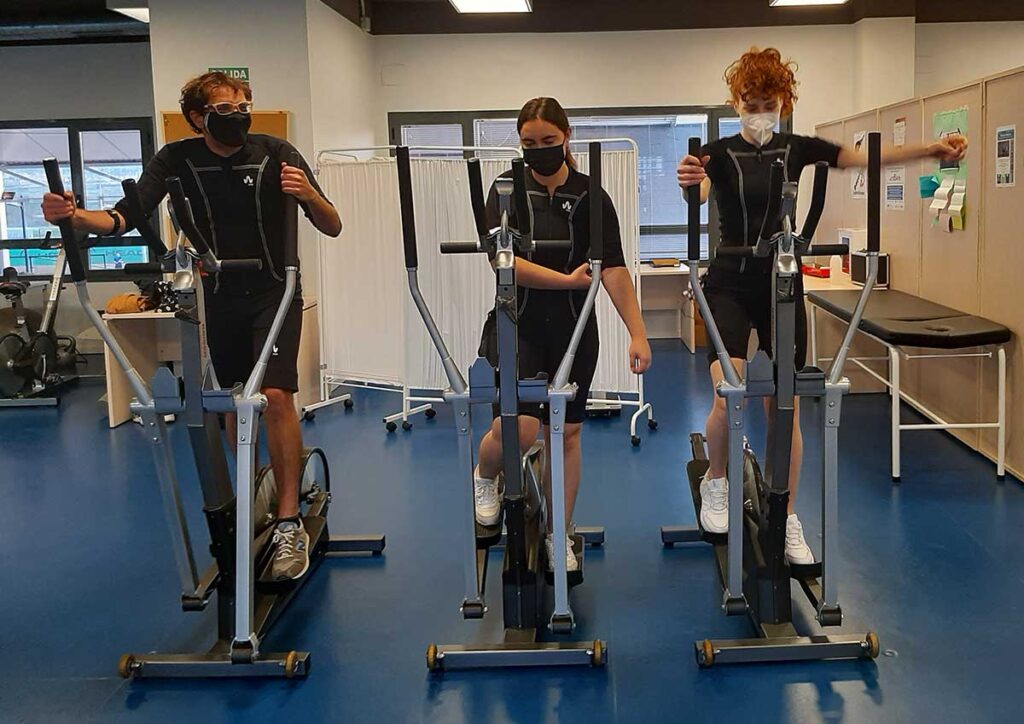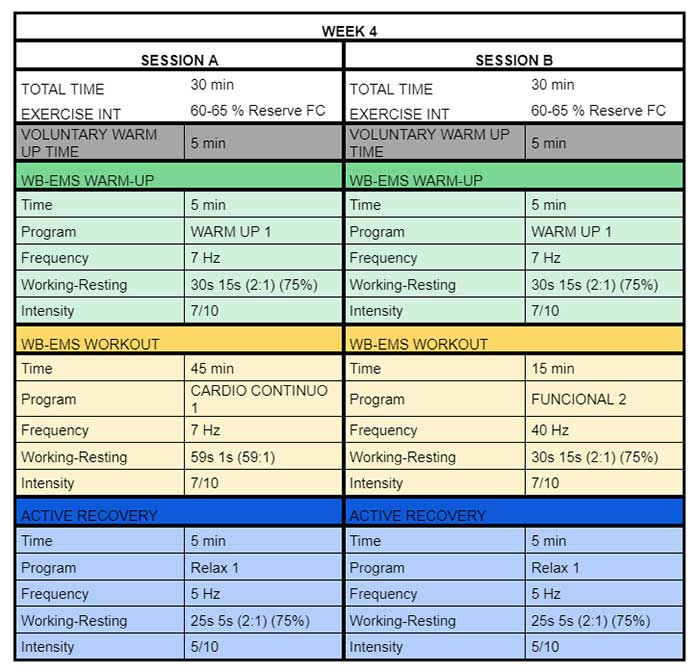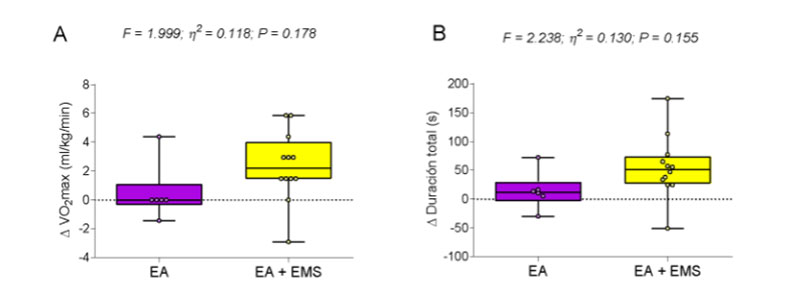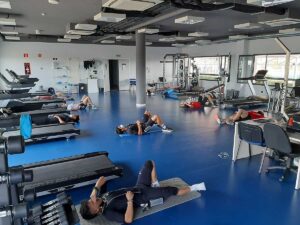We know that aerobic exercise has been and is one of the great pillars of the wide range of possibilities for physical exercise. Society has caused aerobic exercise to be directly related to extensive continuous aerobic exercise. With this in mind, we should mention the importance of cardiorespiratory fitness in terms of health parameters, since good cardiovascular fitness means that the organs involved in this process consume oxygen in a more optimal way, and can use it to generate more energy (which would significantly improve our metabolism).
The greater the cardiorespiratory fitness, the better the health (1). Together with strength training, aerobic exercise is one of the main pillars of sports practice, whether it is for fun, performance or entertainment (2). Both variables indicate, in a global way, a person’s health and physical fitness (3). On this occasion, we are going to focus on the so-called cardiovascular fitness, which indicates the degree of physical capacity that a person possesses to perform any type of physical activity.
How to measure cardiovascular fitness
An objective way to measure cardiovascular fitness level is through a maximal stress test. Maximal stress tests are based on an exercise of increasing intensity that manages to bring the athlete to make the maximum effort and provides a value called “maximal oxygen consumption” (Vo2Max).
Vo2Max is a marker of a person’s fitness. Vo2Max is a variable that indicates the following:
- How our heart is doing, since a high Vo2Max means a heart capable of pumping a large amount of oxygen under extreme exercise conditions.
- How our lungs are doing, as they are able to carry out the gas exchange between oxygen and carbon dioxide very quickly and efficiently.
- How our muscles are doing, due to their high efficiency in using oxygen for energy production and movement.
Therefore, having a high Vo2Max is synonymous with having a good physical condition and good health. That said, whole-body electrostimulation (WB-EMS) is a tool that manages to involuntarily stimulate up to 10-12 muscle groups, thereby increasing oxygen demands in those target muscles (4). Considering that WB-EMS has an acute effect similar to that of physical exercise on.
Electrical muscle stimulation would help to improve cardiovascular fitness; therefore, the objective of this intervention is to test whether the Wiemspro electrostimulation suits improve cardiovascular fitness, and its results.
Initial Assessment: Cardiovascular Fitness
This study was conducted in healthy young adults aged 20-30 years with no diagnosed pathologies. The origin of this decision was the need to know the habits of this target population, and to evaluate the effect of the electrostimulation vests on their workouts.
A total of 19 adults (52.6% women) with a mean age of 26.6 ± 6.5 years and no previous experience in EMS training, participated in this intervention. For the assessment, we completed the following tests:
- Cardiovascular fitness: Cardiovascular fitness was measured using the validated Course Navette*field test to determine maximal oxygen consumption (VO2max) (5).
* The Course Navette is an incremental test in which the intensity increases progressively, and where the participant must cover a distance of 20 meters in the time stipulated by a sound signal. The test ends when the participant is not able to cover the programmed distance in the defined time.
In this test, the speed increases by 0.5 km/h every minute, with an initial speed of 8.5 km/h. The last stage completed, the speed reached and the total time were recorded. Leger’s formula was used to obtain estimates of VO2max (VO2max = 5.857 x velocity-19.458) (5).

Training plan
The plan for the entire training is detailed in this blog post where we talk about Electrifitty. To sum up, we would like to indicate that the training had a duration of 4 weeks + 4 times per week + exercises ranging from 30 to 60 minutes.
The exercises carried out were continuous aerobic both on elliptical trainer and cycle ergometer. Exercise intensity was adjusted for each participant so that they trained between 60-65% of their heart rate reserve.
In the following image, we can see an example of two different sessions in the same week. It is worth noting that all sessions were recorded by an OH 1 heart rate monitor to ensure that participants trained at the intensity they were supposed to.

Results of the study and improvements achieved
The improvements achieved in only 4 weeks are difficult to compare, since the selected parameter requires a longer adaptation time; however, we did observe a clear trend towards improvement in cardiovascular fitness in those people who trained with the electrostimulation vest.
This intervention aimed to increase HR during the session itself, and to increase caloric expenditure with the objective of reducing body fat levels. The hypothesis presented before the intervention, that the group using WB-EMS would obtain greater benefits with respect to the group that did not, is proven.
Cardiovascular fitness
Cardiovascular fitness was the main study variable. In this case, using graph 1, we can confirm that there is a tendency for the group that exercised with the electrostimulation suit to improve. Study groups:
- AE: group that performed exercise without WB-EMS.
- AE+EMS: group that performed exercise with EMS.
In Graph 1 change in maximum oxygen volume. Graph 2, the change in total test duration.

We can confirm that there is a greater tendency towards improvement in the group that exercised with WB-EMS (yellow). If we analyze the statistically significant differences, we see that there is no clear difference(p > 0.05), however, the trend in the graphs is clear.
What does electrostimulation contribute to this process?
If we analyze these results more precisely, we do not find a statistically significant difference between the two groups; however, we can see in the images that there is a slight tendency towards improvement in those individuals who used the Wiemspro electrostimulation suit.
WB-EMS provides a higher energy expenditure in the session, as it raises the heart rate, and also has an effect on the body composition and physical condition.
Conclusion
To conclude, we would like to point out that cardiorespiratory fitness improves after the application of WB-EMS for a period of 4 weeks.
It is true that, as we mentioned at the beginning of the study, 4 weeks is a short time to see improvements in these health parameters; however, the trend towards improvement is clear. Future studies should have to overcome the time limitation and make sure that the application of WB-EMS follows the principle of progressive overload in order to optimize the improvements produced by electrostimulation.
The next step is to analyze specifically what happens in both types of session (Session A and Session B), and to analyze whether these physiological effects are in accordance with the results we have found in this study or, on the contrary, whether we should consider another type of intervention.
Unai Adrian Perez de Arrilucea
Wiems Lab Team
References
2. Knuttgen HG. Strength training and aerobic exercise: comparison and contrast. The Journal of Strength & Conditioning Research. 2007;21(3):973-8.







